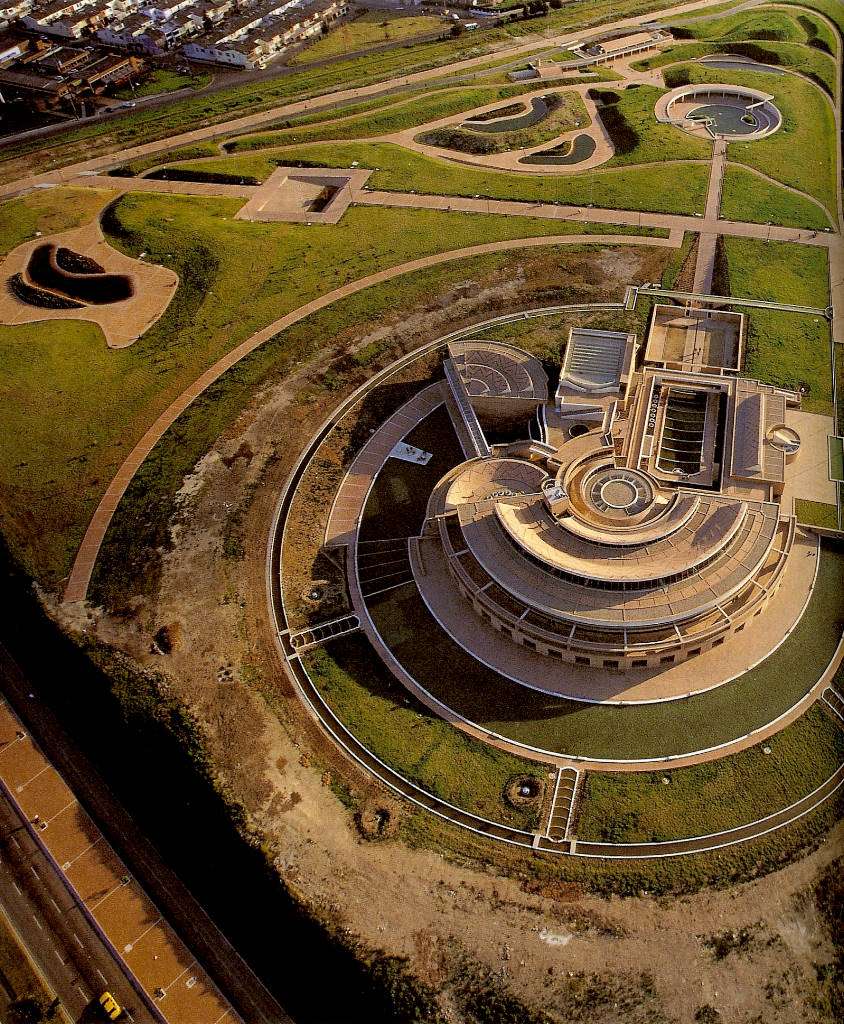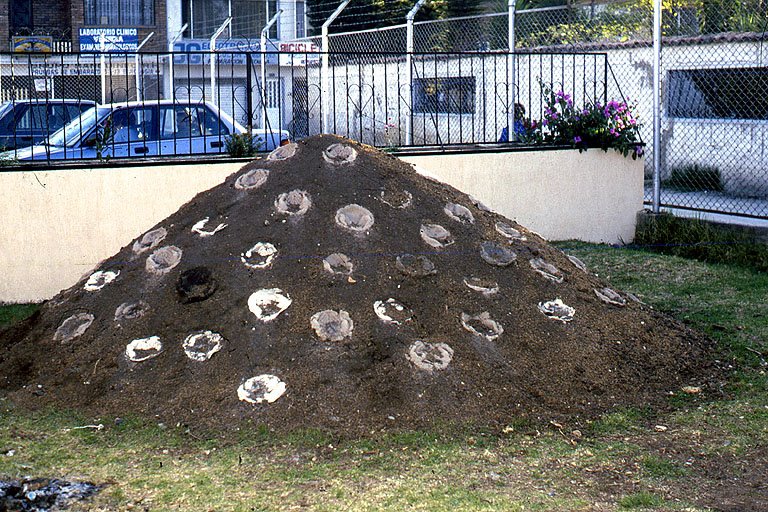
the good old days were gone. the tropical modernist hope that spread throughout the region, and was remarkable in colombia, with early visits and plans and projects by le corbusier and sert, faded fast with the problems of urban congestion and overpopulation in the cities, and particularly the resurgence of la violencia - remixed with guerrilla movements and the rise of the drug economy and narcoculture - throughout the country. bogotá, at its 2,600 mts above sea level and with its explosive growth that pushed the mid-century population of around 500,000 to over 6.5 million by the nineties, became an infamous place, stuffed with the usual thirdworld-city problems of urban poverty, congestion, social polarization, precarious housing conditions, lack of services, pollution and polarized social dynamics, spiked with the homegrown mix of trigger-happy brawls between druglords, guerrillas, army and paramilitary groups; muggings and kidnappings; and strong u.s. meddling in politics that would eventually scale to a general (albeit under-the-water) intervention.
but when hope was just about lost, and throughout latinoamérica “colombianization” became a popular synonym of sociopolitical decay and tailspin into violence, things started to happen, to change. in bogotá, changes were more visible, more immediate. the multiplication of change was faster and more intense. little more than ten years has been enough to seriously change the course of the city, this time for better.
basic service coverage is now almost full. crime has dropped 70%, and kidnappings are down 85%. the city has reprogrammed mobility with environment-friendly schemes including a 300 km network of bicycle-lanes and a bus rapid transit system. public spaces are being reclaimed. people are back in the streets at night.
colombian writer armando silva gives a hint of this newfound optimism in his profile of bogotá for the last biennale: “if we believe that progress in social dynamics is what gives shape to a city, then we can identify a new bogotá of culture emerging over the past decade.” he means a greater urban, civic, participatory culture, a city-culture that is turning to a stronger social interactions and an overall better life.
peñalosa summed it up like this: "we invested in high-quality sidewalks, pedestrian streets, parks, bicycle paths, libraries; we got rid of thousands of cluttering commercial signs and planted trees. ... All our everyday efforts have one objective: happiness."
yes, it's a bit corny,but hey, it sure beats the bureucratic telenovela visions of greatness we're so used to in the tropics.
so, what’s this whole “bogotá experiment” about? here’s a peek at some of the city’s latest and most relevant urban / architectural projects:
1. transmilenio : the premise is simple. if you want people to stop using their cars, why not make driving hell worse? fire with fire, congestion with congestion. don’t do stupid things like build second, third and forth-tier urban highways. take lanes away from automobiles. oh, and use the bus. transmilenio is bogotá’s answer to public transport. taking cues from the brazilian city of curitiba’s original bus rapid transit system, the city began implementing this type of infrastructure in 2000 targeting traffic and pollution. old rackety buses with self-appointed routes were partially substituted by efficient, exclusive lane transport. the final phase of the project is programmed for 2015. average commuting times have been reduced around 25%, and, in comparison to other public transport infrastructures (subway, urban trains, etc.) the costs and additional requirements are considerably lower.


daily passenger demand: 1.2 million passengers, in average
passengers during rush hour: 130.395, in average
114 stations operating
total network: 84km
302 neighborhoods connected
more
more
more
2. ciclorutas : if buses get their own lane, why shouldn’t bicycles? since 1999, bogotá’s network of multi-lane bike routes, connected by bike and pedestrian bridges, has extended to 297km, becoming a widely used alternative means of transportation. the lanes go into the poorer barrios, opening access to the city and lots of the new social infrastructure. an additional 301 km of ciclorutas are programmed for the next ten years.



(yep, that's ricky burdett)
more
3. libraries and parks : the capital city public library network has created a layered mesh of cultural/education/research infrastructure extending throughout the city, with a three “greater libraries,” six “local libraries”, and other smaller “neighborhood libraries.” they are strategically located so that they link-up to either transmilenio corridors or ciclorutas. the big libraries are situated at the heart of urban parks, like bolívar park and el tunal.


a great example of this new approach to public works is the tercer milenio (third milenium) park, a 16.5 hectare park created on what was once a sort of no-man’s-land slum/dump area.

4. bogotá venice biennale (bvb) : with the objective of “shifting the production and circulation of art from the usual places…” in 1995, bogotá celebrated its first in-situ “venice” biennale, in one of the poorer peripheral barrios of the city which happens to be called venecia. the initiative that sought to give a taste of contemporary art practices to local and typically marginal communities. a creative link between local practice and global art market, the last bvb (the sixth version) was held in 2006.


more
5. webbing : further exploring the bogotana bush, online:
bogotá urban lab
“bogotá urban lab is a website dedicated to the city of bogotá, which is a real laboratory for new urban practice. bogotá, capital city of colombia, went from being renown for corrupt governance and urban chaos to being a model for visionary politics and progressive urban planning.”
ricky burdett on bogotá et. al.
popular de lujo
carolina caycedo
bogowiki
museo vintage
bogotanismo
bitácoras de bogotá
bogotá//2006mts
next stop: buenos aires (che)



No comments:
Post a Comment